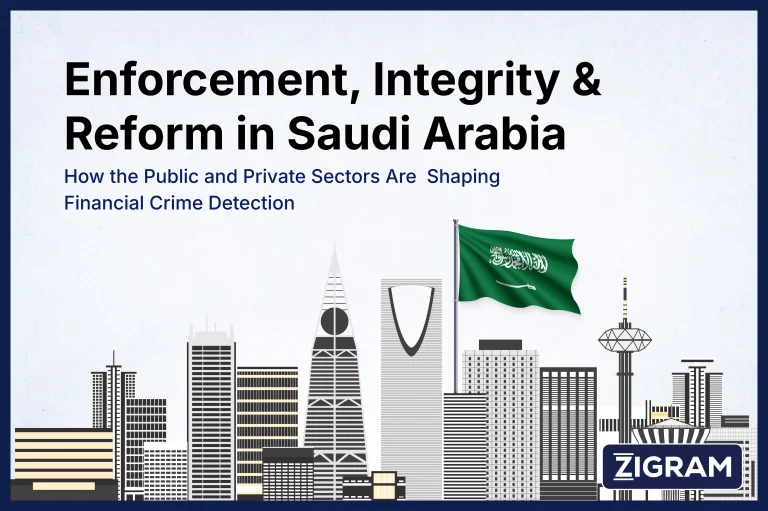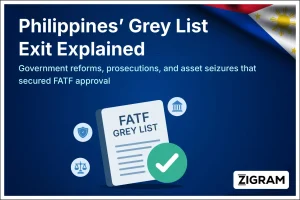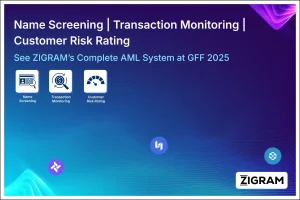Saudi Arabia has significantly stepped up enforcement of financial crimes to protect investors and align with international standards (FATF). The Capital Market Authority (CMA) – Saudi’s securities regulator – wields broad enforcement powers. It issues rules, monitors trading, and can impose fines, revoke licenses or refer suspects to law enforcement.
In recent years the CMA has actively pursued market manipulators and fraud. For example, a May 2025 CMA press release announced that its board referred suspects to the Public Prosecution for manipulating a share offering and fraudulent trading. The CMA emphasized that “unlawful practices involving fraud, deception… and manipulation” violate the Capital Market Law and will be punished. Similarly, in early 2024 the CMA publicly confirmed it referred a group of investors to prosecutors for rigging stock prices across 52 listed companies. The CMA warned that such illegal trading exposes perpetrators to legal accountability under the law.

Regulatory Enforcement Framework in Saudi Arabia
Enforcement tools:
The CMA collaborates with the judiciary and police to pursue wrongdoers. Its cases are handled by the General Secretariat of Securities Disputes, and convicted violators are publicly named. Victims of fraud can also seek compensation through CMA’s dispute committee.
Sanctions and fines:
The CMA has imposed hefty fines and sanctions on violators. For instance, in 2023 it secured SAR 4.2 million in fines (≈$1.1M) against two firms for unlicensed trading and advertising securities on social media. In that case the CMA noted the conviction “came as a result of joint coordination and cooperation between the CMA, the Public Prosecution, and the relevant security authorities”. These actions underscore the regulator’s zero-tolerance policy: it pledges to use advanced surveillance tools and information-sharing to “not hesitate… to pursue financial market manipulators”.
Recent White‑Collar Enforcement Cases & Lessons
Beyond CMA actions, Saudi Arabia has aggressively targeted public-sector corruption and financial crime. In July 2024 the government enacted a new Nazaha Law (Anti‐Corruption Authority) that, among other measures, reverses the burden of proof for unexplained wealth of officials. This reflects an intensified crackdown: Nazaha reported hundreds of ongoing corruption investigations. By late 2024, “over 280 investigations with over 130 arrests” had been opened by the Nazaha investigative unit, and thousands of officials have been detained in related probes. In June 2024 alone, Nazaha staged 924 inspection raids and arrested 155 public officials on corruption charges. These figures illustrate the high risks of corruption – a warning also relevant to private sector dealings.
Key enforcement takeaways:
Regulatory and law‑enforcement agencies are signaling that no one is immune from scrutiny – from market traders to government officials. As one legal analysis notes, the new framework ensures “no one involved in any corruption case will be spared… whether a prince or minister”. For banks and compliance officers, the lesson is clear: strict compliance and transparent record-keeping are crucial.
High‑profile cases:
Saudi authorities have pursued large frauds, bribery and embezzlement in recent years (e.g. earlier anti-corruption campaigns targeting major firms and officials). In the capital markets specifically, CMA enforcement and public prosecutions for stock manipulation serve as prominent examples of white-collar enforcement. Each case underscores the importance of AML/CFT systems and the penalties for breaching them.
Public–Private Collaboration & Information Sharing
Saudi regulators recognize that fighting sophisticated financial crime requires collaboration with the private sector. Public–private partnerships (PPPs) – formal frameworks where banks, supervisors and law enforcement share data and expertise – can greatly strengthen AML/CFT efforts. Industry experts emphasize that “PPPs are critical for enhancing AML and CFT efforts”. In practice, this means banks and insurers meeting regularly with authorities to exchange insights on emerging threats.
Bridging information gaps:
Effective PPPs “enable collaborative analytics and secure information-sharing, providing a clearer view of financial crime risks”. By pooling anonymized transaction data or typology alerts, banks help regulators identify suspicious trends more quickly. In turn, authorities like the CMA, SAMA (central bank) and the Saudi Financial Investigation Unit can feedback “typologies, best practices” and regulatory updates to industry. For example, PPP committees in the region have begun sharing global money-laundering patterns and sanction-evasion methods with local banks, helping them refine detection rules.
Saudi initiatives:
While specific Saudi PPP programs are still evolving, the government has signaled support for such collaboration. Vision 2030’s drive to modernize finance includes integrating technology and data in AML. Saudi FIUs and regulators have attended FATF and Egmont meetings, and they encourage “robust intelligence-sharing mechanisms” internationally. Firms also participate in multi‑agency fraud forums. In short, Saudi institutions are moving toward the global best practice: treating private sector compliance teams as partners in the financial crime fight.
Sharing Typologies & Trends to Strengthen Detection
Key to any PPP and AML regime is actively sharing knowledge on criminal typologies and emerging trends. Money-laundering methods continuously evolve – for instance, criminals increasingly exploit new payment tech or informal networks. In the Saudi context, regulators have highlighted several high-risk channels:
Hawala and informal transfers:
The traditional Middle Eastern hawala system remains widely used for remittances. Its informal nature poses a monitoring challenge. As noted in regional analysis, “the traditional Hawala system… adds another layer of complexity by offering unregulated channels for cross-border transfers”. Financial institutions must watch for tell-tale patterns (e.g. rapid cross-border outflows without clear business purpose).
Trade‑based money laundering:
Saudi Arabia’s large import/export volumes create opportunity for trade-related crimes. Investigators warn that “the KSA’s active trade landscape presents opportunities for trade-based money laundering, where financial crimes can be disguised through fraudulent invoicing or price manipulation”. Banks should scrutinize letters of credit, commodity flows and trade documentation for signs of over/under-invoicing. Sharing case examples among banks – such as cross-border commodity deals linked to illicit proceeds – can help spot patterns.
Digital payments and high‑value transactions:
Rapid growth in e-payments and fintech, especially during Vision 2030 reforms, also introduces new risks. Crypto and emerging fintech are not yet mainstream in KSA law, but global experience suggests these channels will be monitored closely. Even conventional venues like luxury real estate or bulk cash deposits deserve extra scrutiny in a high-growth economy.
Sanctions and compliance trends:
With expanded global transactions, Saudi firms must stay aware of international sanctions trends (e.g. on Syria or Yemen). Regulators expect financial institutions to implement robust sanction-screening and to heed typology alerts from bodies like the UN or FATF.
The key takeaway for compliance officers is to treat typology updates as living intelligence. Regular interaction with AML authorities – through mandated reports (STRs) and voluntary briefings – should allow banks to update their models. In fact, FATF guidance urges such “feedback to the industry through lectures, joint presentations and seminars” on identified ML/TF schemes【32†】 (for example, authorities globally circulate typology reports after major AML sweeps). Saudi banks are increasingly involved in these exchanges. By combining their internal analytics with regulators’ trend reports, financial institutions can better fine-tune transaction monitoring alerts and KYC reviews.
Conclusion
Saudi Arabia’s recent track record shows a clear trend: robust enforcement and proactive partnership are central to financial crime deterrence. For legal professionals and compliance officers, the message is clear. Regulators are aggressive and well‑armed – relying on technology, legal tools and cross‑agency cooperation – to pursue fraudsters and corrupt actors. Firms should heed these lessons by investing in strong AML/CFT frameworks, training staff on the latest schemes, and engaging in public–private networks that share threat intelligence. In this way, the Kingdom’s vision of a transparent, well‑regulated capital market – attractive to all investors – can become a reality.
Sources
Saudi Exchange – CMA Enforcement Press Release (May 26, 2025):“The Capital Market Authority Refers Number of Suspects to the Public Prosecution”. saudiexchange.sa news release
Argaam News (Feb 8, 2024):“CMA refers some investors to Public Prosecution”. argaam.com article
Saudi Exchange – CMA Sanctions Release (Oct 18, 2023):“CMA imposing SAR 4.2 Million fines on two companies…”. saudiexchange.sa press release
Mondaq / Hamad & Associates (Nov 25, 2024):“The New Nazaha Law – White Collar Crime, Anti-Corruption & Fraud”. mondaq.com article
Napier AI Blog (Nov 7, 2024):“The state of anti-money laundering in Saudi Arabia: challenges and vision”. napier.ai
Gulf News (Sept 12, 2024):“Tough anti-money laundering frameworks require public-private alliances”. gulfnews.com
- #SaudiArabia
- #Enforcement
- #Sanctions
- #Compliance







